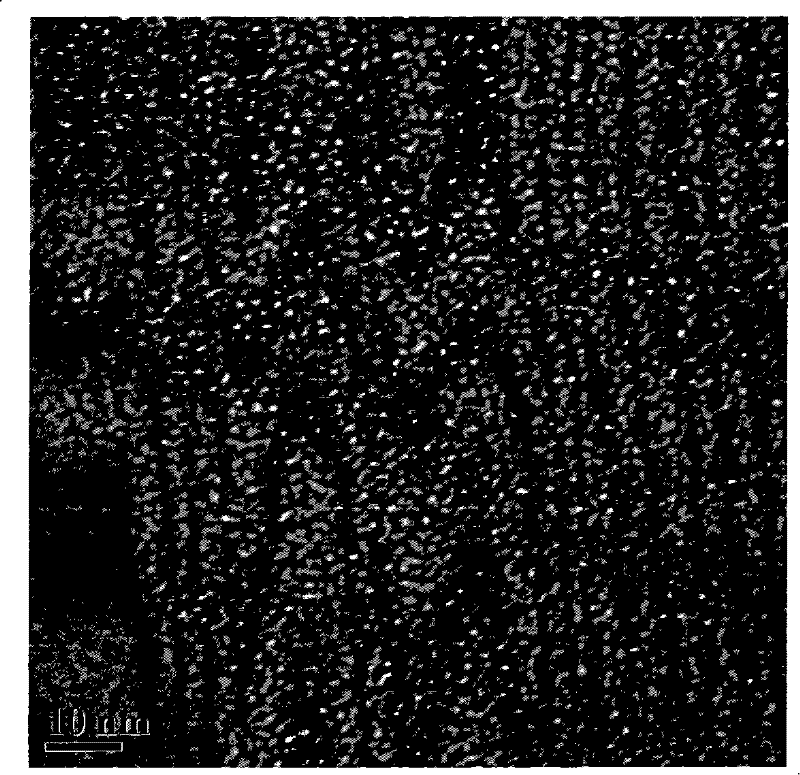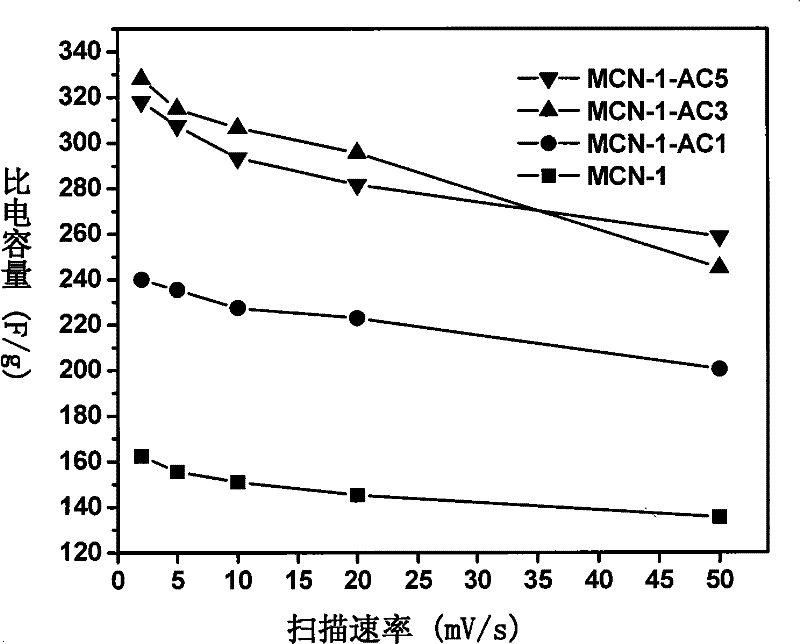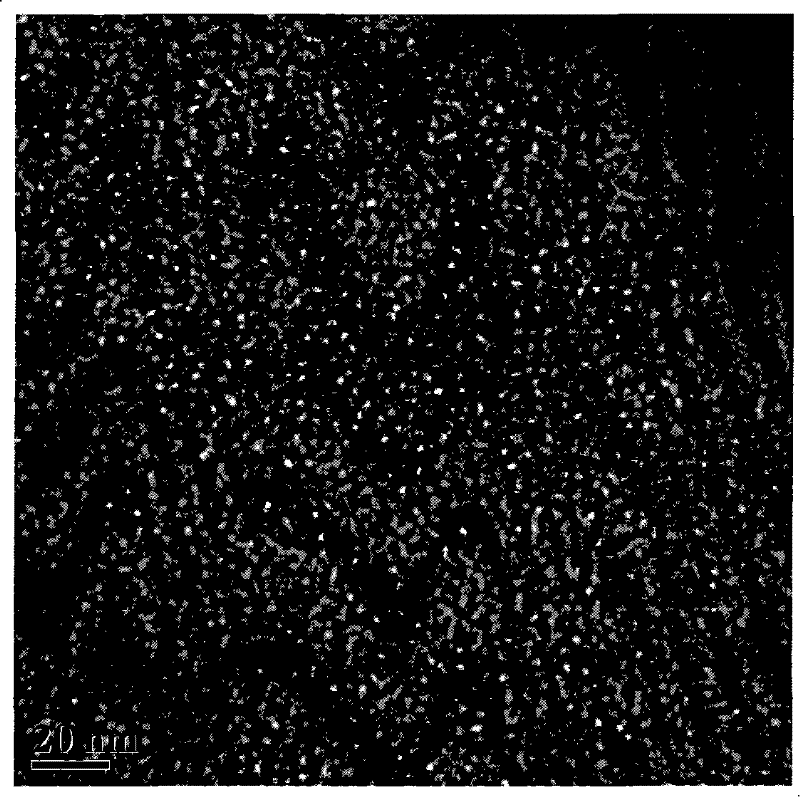Method for preparing nitrogen-doped porous carbon material
A nitrogen-doped porous carbon and carbon tetrachloride technology is applied in the fields of inorganic nanomaterials and electrochemistry, which can solve the problems such as the unsatisfactory capacitance of the material, and achieve the effects of maintaining stability, uniform distribution and high specific surface area.
- Summary
- Abstract
- Description
- Claims
- Application Information
AI Technical Summary
Problems solved by technology
Method used
Image
Examples
Embodiment 1
[0025] 4.4g of ethylenediamine, 10.8g of carbon tetrachloride, and 1.0g of mesoporous silica SBA-15 template were mixed, magnetically stirred for two hours, heated to 90°C, and stirred and refluxed for 6h. The obtained samples were first dried at 100°C, and then placed in a tube furnace, heated to 600°C at a heating rate of 5K / min under a nitrogen atmosphere, kept for 6 hours, and then cooled to take out the samples. After removing the silicon template with 8% HF acid, it was washed several times with ethanol and water, and separated by filtration. Finally, it is dried in air at 100°C, and the obtained product is ordered mesoporous carbonitride, abbreviated as MCN-1. The prepared ordered mesoporous carbon-nitrogen material is mixed with potassium hydroxide in a mass ratio of 1:3, fully stirred and mixed in an aqueous solution, and after drying, the sample is placed in a tube furnace and heated under an Ar atmosphere to The temperature was raised to 750°C at a rate of 10K / min,...
Embodiment 2
[0029] The method of this example is basically the same as that of Example 1, except that the mass ratio of the ordered mesoporous carbon-nitrogen material to potassium hydroxide is 1:5, and it is named MCN-1-AC5. Then characterize its morphology, texture characteristics and electrochemical capacitive performance (the electrolyte is 6mol / L KOH). image 3 It is a TEM photo of the porous carbon-nitrogen material obtained in this example. This structure has quite abundant micropore distribution equally, what is different from the porous carbon-nitrogen material that embodiment 1 obtains is, there is certain mesopore distribution in the porous carbon-nitrogen structure that this embodiment obtains, and they make these micropores effectively connect. Similarly, the 77K nitrogen adsorption and desorption experiments also obtained mesoporous structures distributed in the range of 2-5nm.
[0030] The change of the specific capacitance of the electrode material at different scan rate...
PUM
 Login to View More
Login to View More Abstract
Description
Claims
Application Information
 Login to View More
Login to View More - R&D
- Intellectual Property
- Life Sciences
- Materials
- Tech Scout
- Unparalleled Data Quality
- Higher Quality Content
- 60% Fewer Hallucinations
Browse by: Latest US Patents, China's latest patents, Technical Efficacy Thesaurus, Application Domain, Technology Topic, Popular Technical Reports.
© 2025 PatSnap. All rights reserved.Legal|Privacy policy|Modern Slavery Act Transparency Statement|Sitemap|About US| Contact US: help@patsnap.com



